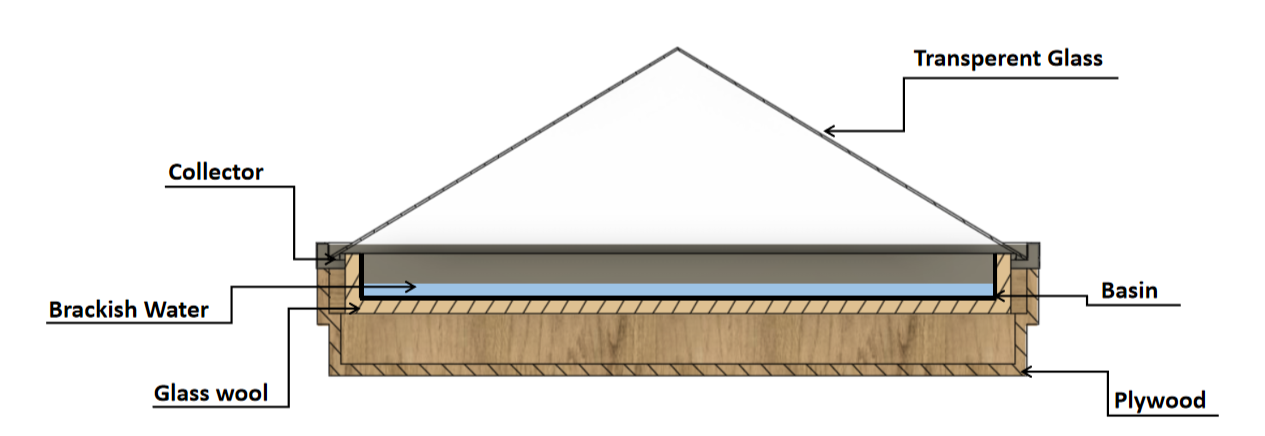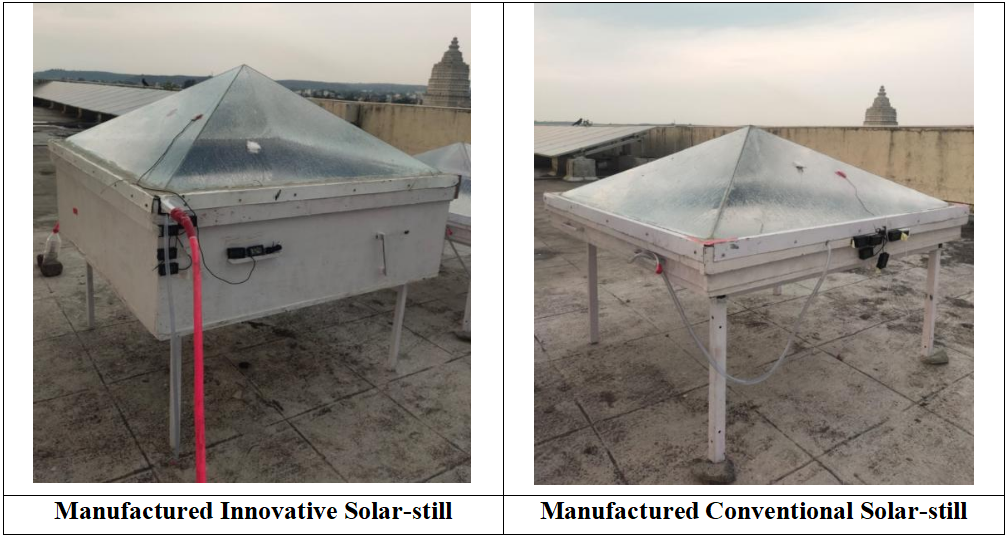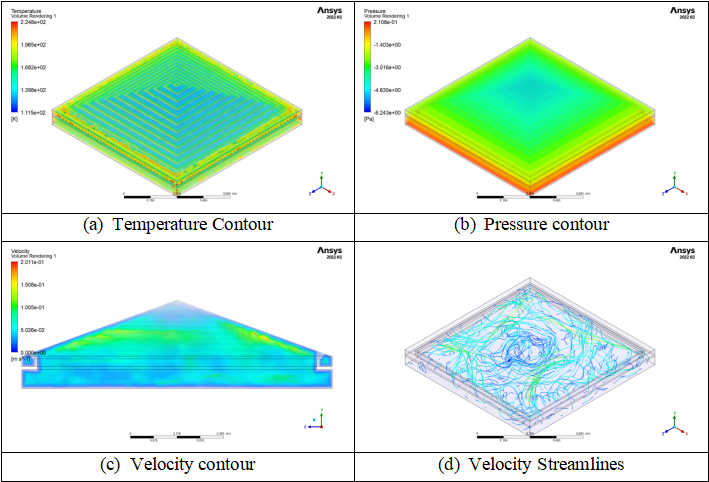
Pyramid Type Solar Still
Associated with MIT Academy of Engineering, Alandi, Pune
The project was focused on improving the productivity of solar stills. The project enhanced my skills in CFD analysis, fluid dynamics, heat transfer and design principles, while deepening my understanding of sustainable technologies and renewable energy.
Skills: Computational Fluid Dynamics (CFD) · Ansys Fluent · Heat Transfer
Solar stills are passive systems which harness the solar energy for the conversion of saline or brackish water into distilled water through evaporation and condensation mechanisms.
In regions where water scarcity is prominent issue, Pyramid type Solar Stills (PSS) offer a promising solution for sustainable freshwater production through solar desalination. This study investigated the optimization of PSS efficiency by varying the depth of the basin of PSS and incorporating a wick surface. Notably, at 0cm depth with a wick surface, the innovative PSS exhibited an impressive 11.4% boost in output. Furthermore, depth variations resulted in significant insights, with even a modest 10cm variation providing a remarkable 7.9% increase in productivity. The productivity continued to decrease with increase in depth. At a depth of 15cm, where a 9.8% reduction in productivity was observed, this study emphasizes the adaptability of PSS to different environmental conditions, thereby contributing significantly to the field of solar desalination and the potential alleviation of water scarcity challenges. This project contributes significantly to the field of solar desalination and holds the potential to solve water scarcity issues by increasing the efficiency of Pyramid Type Solar Stills.


ANSYS Fluent 2022R2 is used to simulate the flow and heat transfer inside the Pyramid type solar still. CFD provided detailed information about the still’s performance, including the temperature distribution, fluid flow, and vapor pressure, and it is used to optimize the system design and operating conditions.

In conclusion, this study aimed to assess the performance of an innovative pyramid-type solar still in comparison to a conventional solar still under varying experimental conditions. The findings highlighted several key factors impacting the efficiency of solar still, which includes the presence of a wick surface, the depth of the basin, and shadowing effects.
0 Comments Add a Comment?